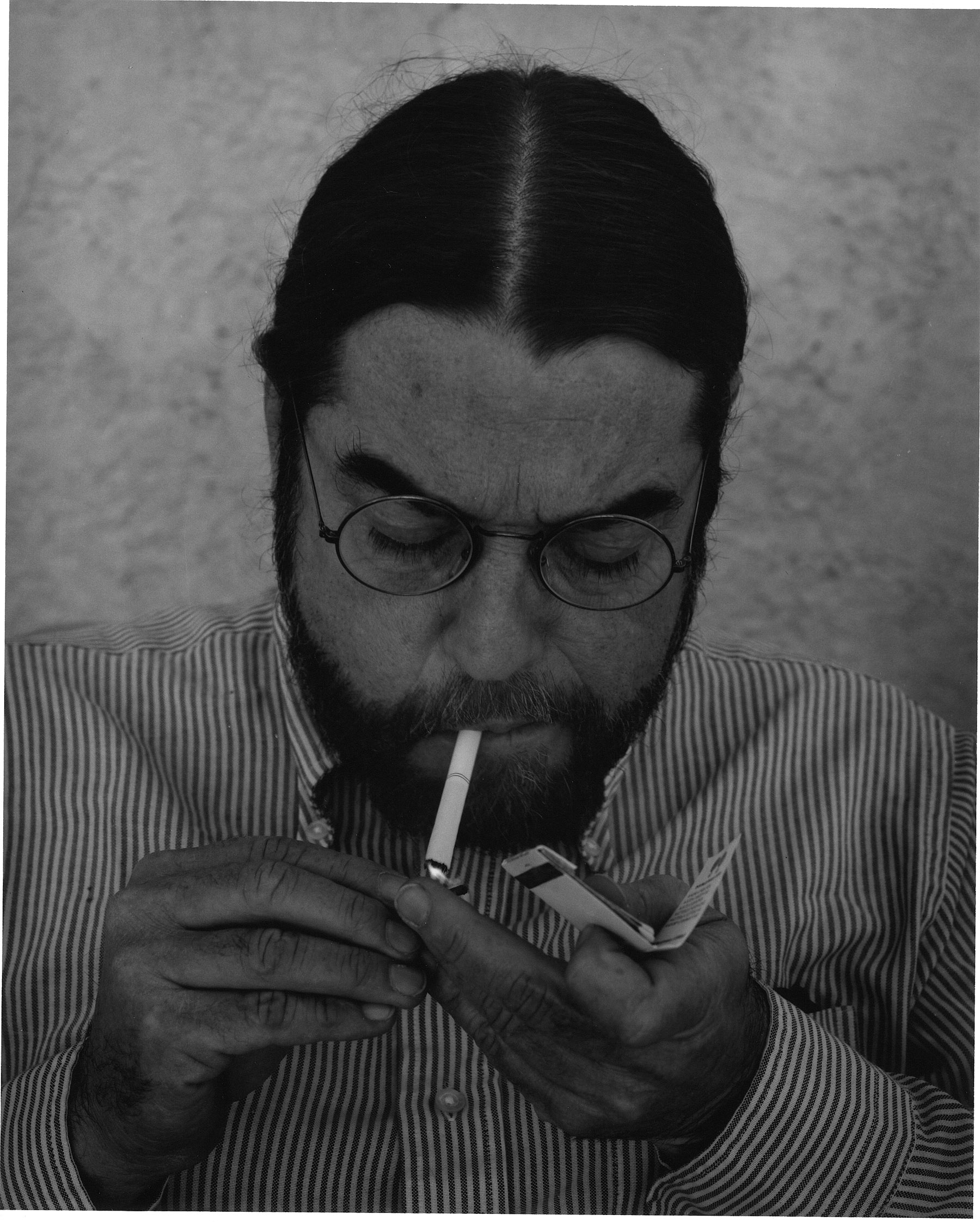I was one of Robert Heinecken’s graduate students. I’ve got my stories. He was a man who generated stories.
Here’s one: my love applied to and was accepted at UCLA. 2 years later, I too applied and was accepted. In a three-year MFA program, this meant that my love and I would overlap a year. In late September, I had my first appointment with Robert. We met across a table with my box of prints open between us. We were both smoking. The first thing he said to me was “If I had known you were married to ____, I would never have accepted you. Take my advice and find a good divorce attorney. I know from experience there are no survivors.”
It took me a while to understand that that day, across that table, Robert was telling me his truth. Being an artist is a difficult and absorbing business requiring an emotional commitment that brooks no competition. The process of becoming an artist would change me, because, if I became the artist that only I could be, I would go places that no one else would go, and think and do things differently there. I suspect Robert would agree that the thorough artist inevitably becomes a square peg in a round hole. Robert is an excellent example of this substantial and very specific achievement; his creative work, in my opinion, includes some of the very best and the very worst art made in the twentieth century. Without the niceties of political correctness or just plain canny career editing, Robert was always unapologetically the most thorough artist he could be.
Having begun by baldly declaring his mistake in admitting me, Robert continued without a backward glance, presenting me with the greatest challenge any teacher can offer—his unqualified curiosity to know what I would come up with next; his serious, close, professional attention to all my attempts to make my art; and his uncensoring willingness to go where my interests would take him and do the homework he needed to do to get there. I think about the catalytic quality of that attention—how I felt, as a graduate student, that I must not fail at that challenge, and in meeting it, I became a serious and thorough artist, distinct from others—thorough and not.
I think about this through all my years of teaching. I teach in a larger program, without the luxury of working with a very few handpicked graduate students. (Robert never, to my knowledge, had more than six.) I find that I am nervous about the unexamined prescriptions I hand out in batches, the “have-you-seens” and the “do-you-knows.”
Don’t mistake me, those are important contextual questions—all artists are responsible for knowing as much as they can about the story so far. But those questions do not by themselves constitute the combustible cocktail of curiosity and respect that Robert perfected in his teaching, and that was so productive for me as a student.
Here on the wall of my office as I write this is a portrait of Robert made by Harold Jones. Harold gave it to me after we spent an academic year sharing an office and stories in Tucson not long after I received my MFA. The picture shows Robert exactly as I remember him: the long dark hair parted just to the right of his widow’s peak and pulled tightly back in a ponytail at the nape of his neck, the crisply pressed pinstriped button down shirt (which I know must be blue and white), and, although the photo doesn’t show it, the rest of the uniform—a pair of jeans and cowboy boots. Robert, a short tall man, always projected a concise combination of the bohemian and the ex-military. In the photograph, Robert is concentrating on lighting a cigarette, his hands cupped around the flaming match. Harold has wisely and wittily printed the photograph very deeply to accentuate the spark of that match, an apt metaphor for Robert’s effect on many of us.
Here is a story Robert told me. We were flying on a plane to San Francisco to attend the opening of L’Amour Fou. We had just finished teaching a class together on Surrealism and photography; taking me to the opening was his way of thanking me for the countless hours of slide lectures I had given in class. The story is about his time as a Marine Reserve pilot. He once flew a plane alone, at night, over dark country, and, on impulse, he turned off all the lights of the plane, flying in that way until the next town appeared on the horizon. As he was telling the story, I could see his exhilaration—liberation even—and in that remembered moment of total clarity and presence, he seemed ready for the free fall into whatever happens next.
May we all be so lucky.
Ellen Birrell is an artist, educator and founder of X-TRA who lives on a lemon farm in Santa Paula, CA.
Editor’s note: Robert Heinecken died in May in New Mexico from complications of Alzheimer’s Disease. The LA Times carried an excellent obituary describing Robert’s important place in the annals of LA art. For an online version, direct your browser to http://www.latimes.com/news/printedition/california/la-me-heinecken21may21,1,3837090.story?coll=la-headlines-pe-california

